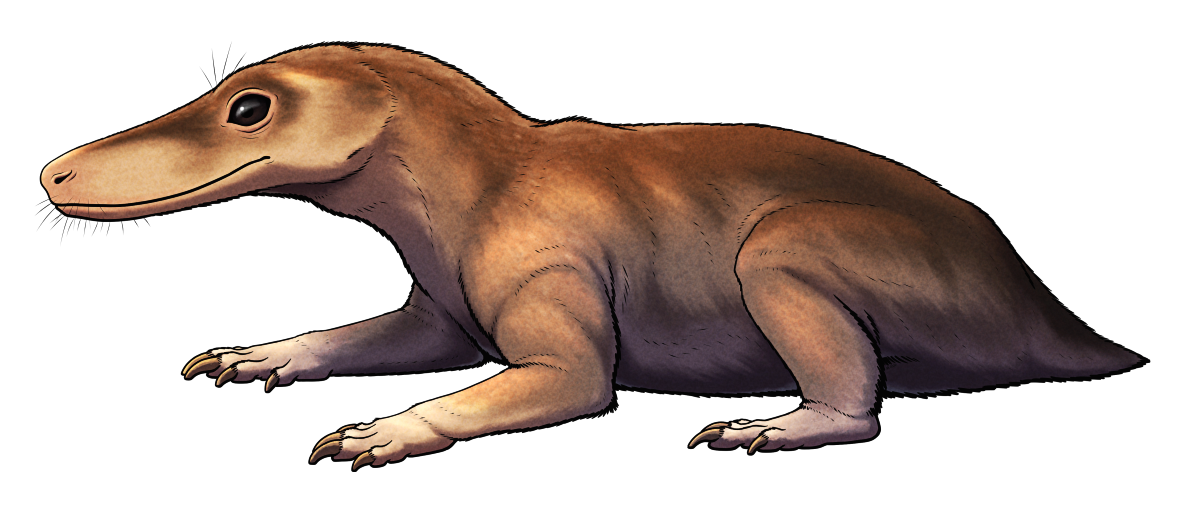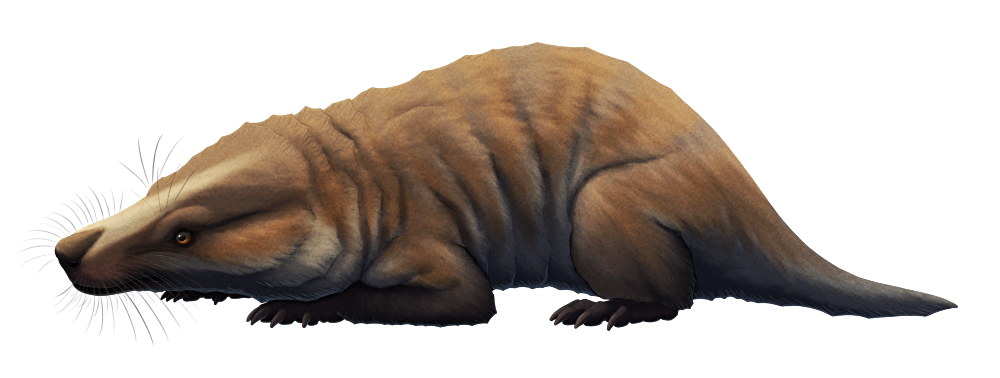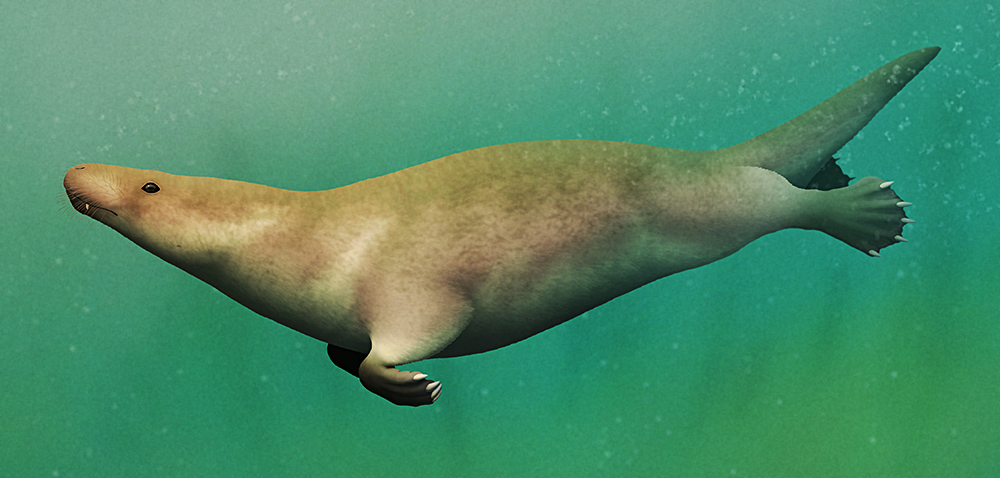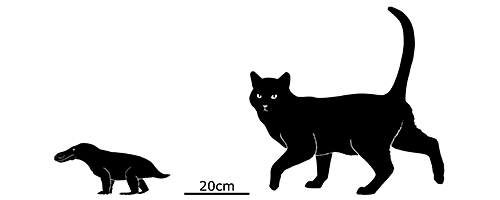Therocephalians were a group of synapsids very closely related to – or possibly even ancestral to – the lineage leading to modern mammals. They were a diverse and successful group of carnivores during the latter half of the Permian, but suffered massively during the “Great Dying” mass extinction, with only a handful of representatives making it a few million years into the Triassic.
Tetracynodon darti was one of these rare Triassic therocephalian survivors, living in what is now South Africa around 251 million years ago. Only about 25cm long (~10″), it had slender limbs and strong claws that suggest it was a scratch-digger. Its long snout was lined with pointed teeth, and it was probably an active predator hunting by snapping its jaws at fast-moving prey like insects and smaller vertebrates.
Its combination of small size, burrow-digging habits, and unspecialized diet may be the reason it scraped through the Great Dying when most of its relatives didn’t – but unfortunately it seems to have been a “dead clade walking”, disappearing only a short way into early Triassic deposits.
Continue reading “Tetracynodon”




